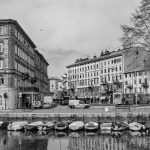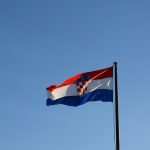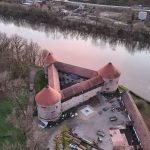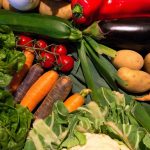December 2, 2018 — The food flies in while the fish swim out. Croatian fish farms remain one of the few economic bright spots for a country that’s otherwise a net importer, said economists at the International Aquaculture Conference held in Vukovar last week, according to Morski.hr.
The fisheries sector generated a trade surplus of almost EUR 45 million this year, according to Dragan Kovačević, the Croatian Chamber of Commerce’s Vice President of Agriculture and Tourism. The fishing industry’s overall success dulls the impact of a nearly-EUR 1 billion trade deficit Croatia’s had since 2012. It’s only grown since joining the bloc in 2013, adding another EUR 50 billion during the first eight months of this year.
Croatia made significant investments into aquaculture and mariculture — fish farming in sea water and fresh water, respectively — to utilize its ample coastline and zig-zagging rivers. The returns on those investments have only started coming in, according to Dragičević.
“We’re seeing a constant increase in mariculture,” he said, referring to farming fish in seawater.
Croatian fish farms have already exceeded the whitefish and tuna goals laid out in its Strategic Plan for Aquaculture, which had a 2020 deadline.
Aquaculture — often referring to fish farming in freshwater — has not developed as quickly, with disease and drought hampering production in 2018. Yet Kovačević insists production will jump past this year’s 3,200 tons thanks to new investments and incoming cash from the European Maritime and Fisheries Fund.
There are also ongoing investments as part of a 2014–2020 Operational Program for Maritime and Fisheries, which will dole out about HRK 1.67 billion.
“Aquaculture, both sea and freshwater, are very important for the Croatian economy,” said Assistant Minister of Agriculture Ante Mišura, adding the European Commissions is allowing state aid to carp farmers experiencing reduced profits.
The boom in aquaculture comes just as the EU is trying to lower fishing quotas, making room in the market for farmed fish. Of all the fish consumed in the EU last year, 35 percent came from within the EU, of which 10 percent were raised on fish farms.
If the industry continues to grow, the signature yellow rings of fish farms and pens dotting the Adriatic and freshwater bodies throughout Croatia may become a symbol of economic progress.
To read more about Croatia’s fishing industry, click here.








